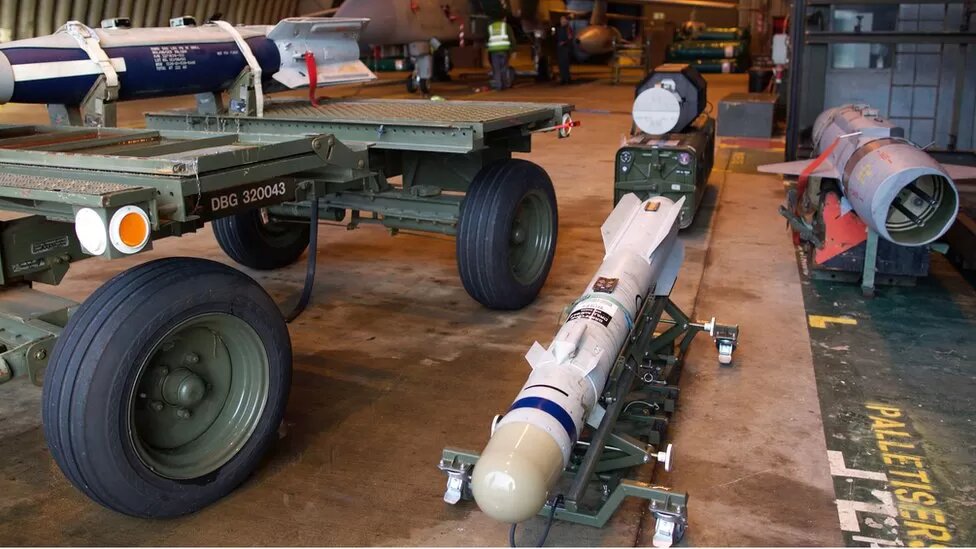UK Defense Secretary Ben Wallace has said that the UK will send 600 more precision-guided Brimstone missiles to Ukrainian forces. This is in addition to its most recent support package, which includes 14 British Army Challenger 2 tanks and other heavy armour.
During a trip to Estonia to meet with eastern European defence ministers, Wallace said that NATO allies should now be ready to give Ukraine more help so that it can finally get Russian forces out of its country.
“In 2023, it’s time to turn the Ukrainians’ progress in pushing Russia back into real gains and make sure Russia knows that the goal now is to push them out of Ukraine and restore Ukraine’s sovereignty, which is their right under international law,” he said.
But what does a Brimstone missile really do? How do they work, and how much does each cost? Here is all the information you need.
What is a Brimstone missile?
Brimstone missiles are ground attack missiles that can be launched from the ground or the air. They were made for the UK’s Royal Air Force and went into service in 2005 with the RAF Tornado.
The missiles were first made for “fire-and-forget” use against large groups of enemy armour. This is a type of missile guidance that doesn’t need any help from the outside after launch.
But when they were used in Afghanistan and Libya, they learned things that led to the addition of laser guidance, which lets a “spotter” choose the most important and precise targets. This is especially helpful when friendly forces or civilians are nearby because it cuts down on unintended damage.
The Ministry of Defense (MoD) says that Brimstone’s accuracy and dependability in combat are “both well above 90%.”
MBDA UK, the company that made Brimstone, is looking into how it could be used from surface launchers, attack helicopters, unmanned aerial vehicles (UAVs), and ships. Right now, the missiles are given to air forces to use with planes.
What are they used for?
Compared to similar older weapons, the warheads on newer weapons are much more powerful against tanks and armour of today. One weapon station is taken up by a launcher that holds three Brimstones, so a single aircraft can carry a lot of missiles.
Brimstone missiles can be set up to change based on the needs of a mission and can find and choose their own targets within a certain area. They are also able to destroy themselves if they can’t find their targets.
The Brimstone has a sophisticated set of sensors on board that let it see its target and figure out where on that target it will do the most damage.
How much do they cost?
In 2015, it was said that each missile would cost £175,000 each. Brimstone missiles are currently used by the Royal Saudi Air Force, the German Air Force, and the Ukrainian Armed Forces, in addition to the UK’s Royal Air Force.
Germany, Qatar, and Saudi Arabia have bought the missile, and the Qatar Emiri Air Force, the Polish Land Forces, and the Spanish Air Force are likely to use them in the future.
How many has the UK sent to Ukraine?
Since Russia invaded Ukraine in February 2022, the UK has been a strong ally of Ukraine, giving the country the second most military aid after the US.
Since the war started, the Ministry of Defence said in October 2022 that more than 10,000 anti-tank missiles, such as Nlaw, Javelin, and Brimstone missiles, had been given to Ukraine to help strengthen their military.
When the missiles were sent to Ukraine before, they were used as anti-ship missiles to help Ukraine fight against Russian warships in the Black Sea.
What does ‘brimstone’ mean?
Sulphur, which has a strong smell, used to be called “brimstone.” Since lightning releases sulphur dioxide, and many ancient religions saw lightning as God’s punishment, brimstone and its strong smell were often seen as signs that God had shown his anger.
Because of this, both the Hebrew Bible and the Christian New Testament use the phrase “fire and brimstone” to talk about how angry God is. The name of the Brimstone missile comes from this idea of “fire and brimstone.”
